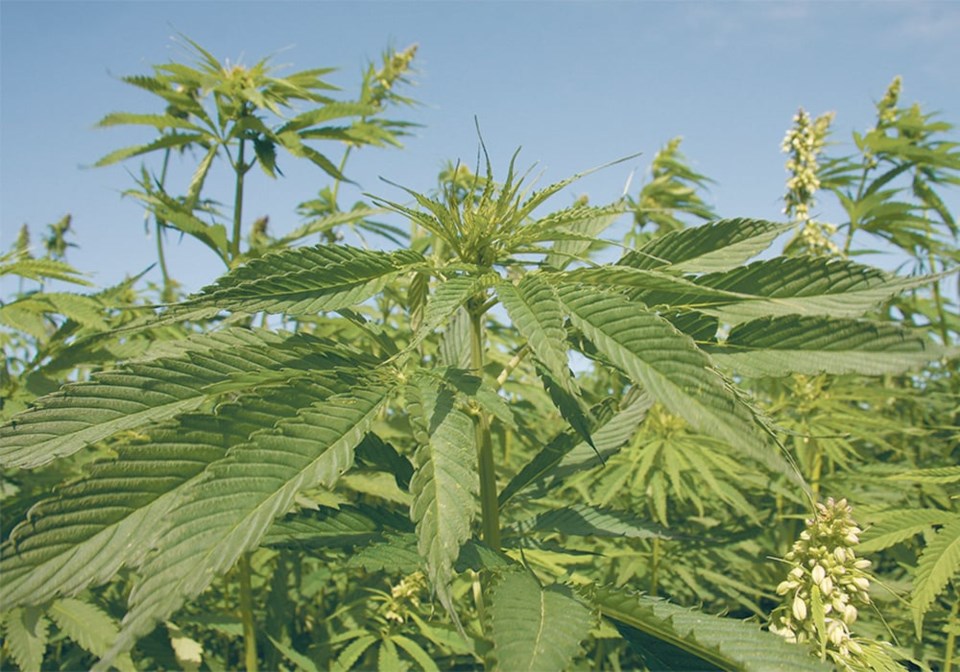BRANDON, Man. — The last few years have been challenging for Canada’s hemp industry.
When canola is priced at $18 to $20 per bushel, it’s difficult to convince farmers to grow alternative crops such as hempseed.
In 2019, Canadian farmers planted about 91,000 acres of hemp, using Health Canada statistics on licenses to grow industrial hemp.
By 2022 acreage of licensed production had dropped to 34,000.
Right now, the economics of growing hemp is more promising.
Buyers are offering production contracts of 70 to 75 cents per pound this winter.
Since canola prices have dropped below $14 per bu., some farmers may be thinking more seriously about hemp, and acreage could climb in 2024.
“Just 小蓝视频 at the Saskatchewan Crop Production Show last week, we had some past growers come back (to hemp) who left for the high canola prices,” said Clarence Shwaluk, director of farm operations with Manitoba Harvest, a hemp food company in Winnipeg.
“They’re back, thinking that 75 cents (per lb) is in a competitive spot.”
Shwaluk and Manitoba Harvest had a booth at Manitoba Ag Days, a trade show held in Brandon every January, hoping to recruit more farmers to produce hempseed in 2024.
A lower price point for growers should be helpful for the hemp food industry.
Manitoba Harvest manufactures food such as hemp hearts, granola, granola bars and protein powder, which it sells throughout the United States and Canada.
Food inflation has become a major obstacle for hemp products as consumers begin turning to cheaper options at the grocery store.
Since prices paid to growers will drop in 2024, Manitoba Harvest and its retailers can offer lower prices and possibly increase consumption of hemp.
“Sometimes hemp is considered a luxury product and they (consumers) will make some other choices with commodity prices coming down and retailers putting pressure on us … to reduce prices at the shelf,” Shwaluk said.
Looking beyond Canada, America’s hemp industry has also suffered through a difficult period.
In 2018 and 2019 the entire hemp sector turned its attention to CBD, the oil found in hemp leaves and buds.
Some research suggests CBD oil can treat many health problems, including insomnia, anxiety and pain.
Acreage exploded in America as growers hoped to capitalize on claims that hemp CBD would become a colossal industry with $10 to $30 billion in annual sales.
“Before COVID, I was invited to Montana, to Pennsylvania, to New York state. For them, hemp was CBD,” said Jan Slaski, a researcher and hemp expert with Innotech Alberta, an applied research organization that has a research farm in Vegreville, Alta.
The CBD hype didn’t live up to expectations. The market crashed and many American farmers had no buyers for their crops.
Now, America’s hemp sector is focusing on another use for hemp.
“Over the last two years, the U.S. has grown about 20,000 acres per year,” Shwaluk said.
“The number one purpose (in America) for growing hemp, now, is fibre.”
As for the food market, Manitoba Harvest and other companies have tried to promote hemp as a food ingredient. The main hurdle has been price.
Food manufacturers, big and small, might include hemp in granola bars, cereal and other foods if it was cheaper.
The solution to the price problem is yield, said a representative of another hemp firm.
If Canadian growers could improve yields, the price of hempseed would decline and it would become more affordable as a food ingredient.
Leaders of Canada’s hemp industry are working on a plan to boost yields. They hope to reveal details of their plan sometime in the coming months.




